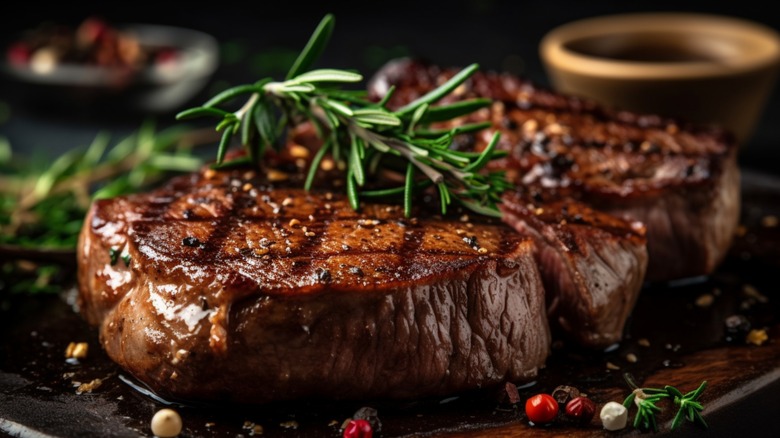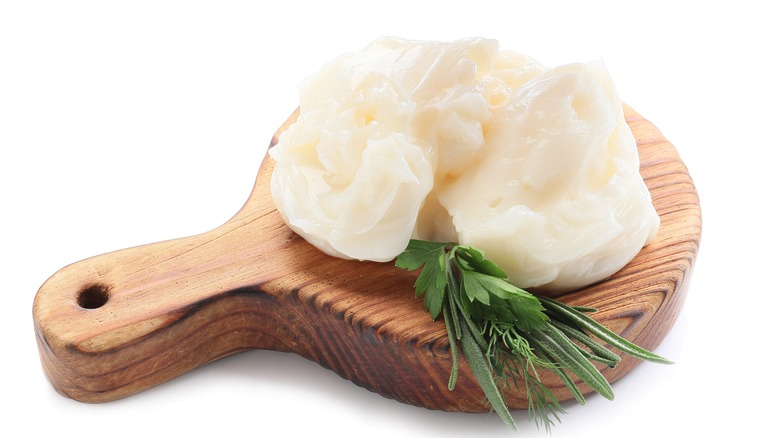Why It Pays To Cook A Steak In Lard
Cooking steak is an intricate art that can be perfected with skills, experience, and attention to detail. From timing, temperature, and utensils to ingredients, there are so many elements that go into making the ideal restaurant-worthy steak. And sometimes, even switching up a thing or two — like fats for example — can also make a huge difference.
While butter is a common choice for enhancing the flavor and juiciness of steak, an alternative that's often overlooked is lard. Rendered from pork fat, this dairy-free butter alternative offers distinct advantages when it comes to cooking steak. Unlike butter, which can easily burn at high temperatures, lard has a high smoke point (at 375 degrees F), providing a more forgiving cooking experience. This makes it ideal for achieving that coveted sear without smoking up your kitchen.
Flavorwise, lard is generally pretty mild and neutral, although some varieties may have a more pronounced porky taste than others. When cooked, it adds a subtle richness to the overall flavor profile while also allowing the meat's natural savory essence to shine through. Its saturated fat content helps create a beautiful crust on the outside while sealing in moisture. The result is tender meat with a delectably juicy interior, juxtaposed with the crispy, charred edges on the outside — an irresistible combination that instantly elevates the dining experience.
A quick guide to cooking steak with lard
There are three main lard varieties: rendered lard, leaf lard, and processed lard. Leaf lard is creamy, odorless, and commonly used for baking. Meanwhile, rendered lard has a mild porky taste and soft texture, and processed lard is a shelf-stable that's more solid but mostly free of any pork flavors. Depending on your personal preference, you can give them a try and pick out what works best with your steak recipe.
Since lard's fat content is higher than butter, 1 cup of lard is usually enough to replace 1 ¼ cup of butter. Realistically speaking, of course, you probably won't be needing a whole cup for cooking steaks. However, this ratio is still pretty helpful to keep in mind when you're playing around with the recipe and making any necessary changes.
Once you've got the lard, all that's left to do is cook the steak as usual. Of course, if you still like your steaks to have that buttery aroma, there's still a way to achieve it even as you're using lard. Simply add a smidgen of butter toward the end of the cooking process, after you've lowered the heat. This will guarantee perfectly seared steak with a glossy finish and that classic rich, sweet undertone.

